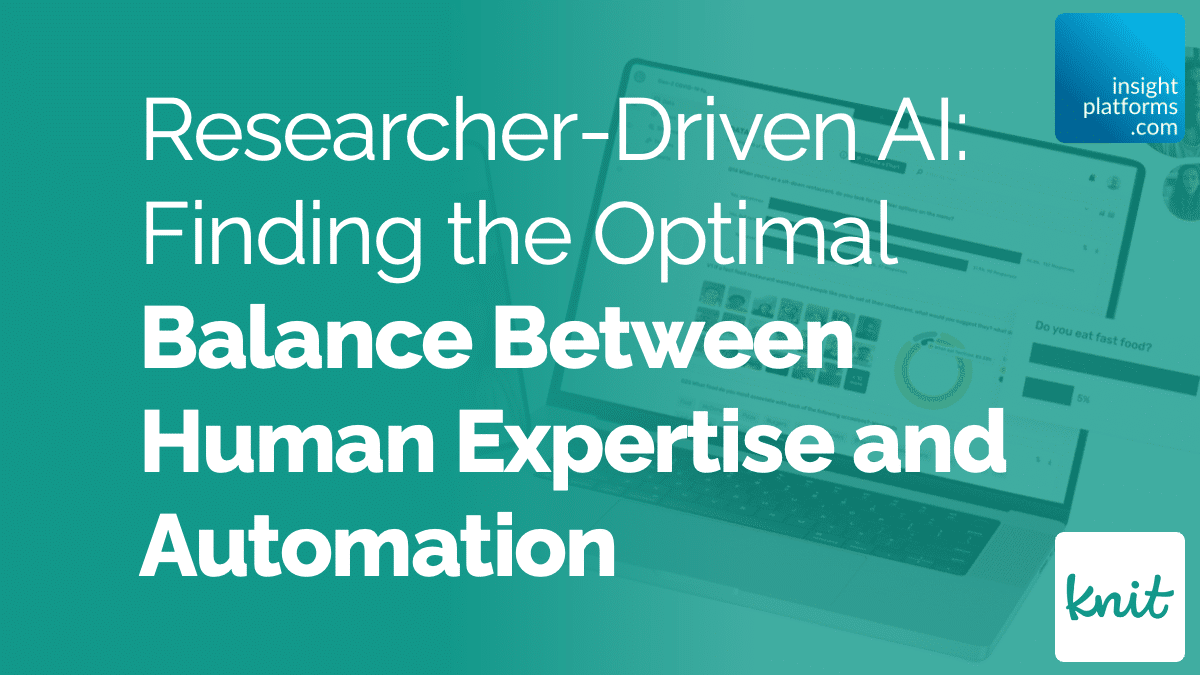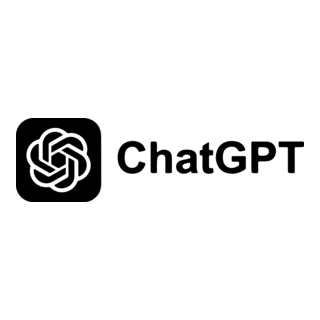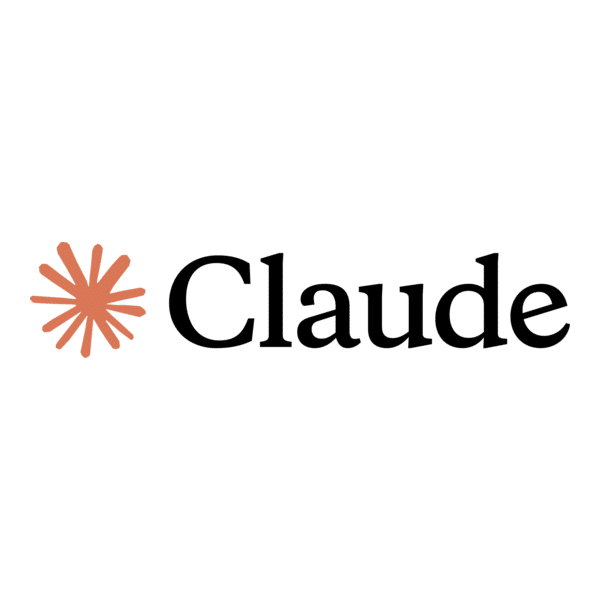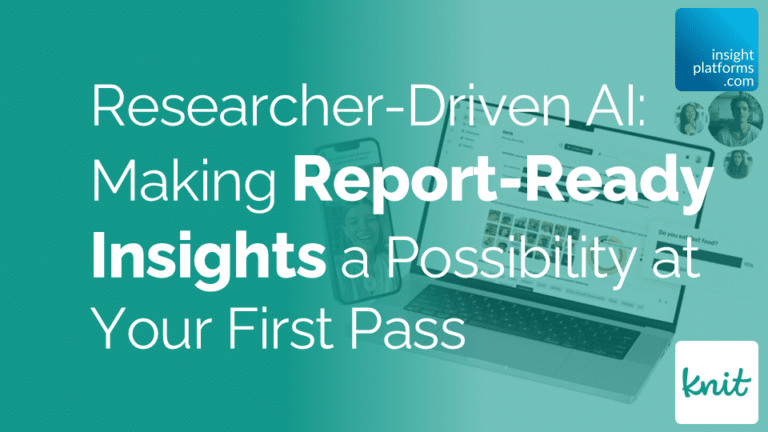
Researcher-Driven AI: Finding the Optimal Balance Between Human Expertise and Automation
By Knit
- article
- Agile Qualitative Research
- AI
- Artificial Intelligence
- Brand Research
- Concept Testing
- DIY Surveys
- End-to-End Survey Platforms
- Innovation Research
- Qual-Quant Hybrid
- Video Analytics
- Video Research
- Voice of Customer Surveys
The integration of artificial intelligence into market research workflows has sparked considerable debate about the future role of human researchers. Will AI replace researchers entirely? Will it simply automate tedious tasks? Or is there a more nuanced evolution underway – one that fundamentally reshapes what research professionals do without diminishing their importance?
The emerging answer suggests a third path: researcher-driven AI, an approach that positions artificial intelligence as an amplification of human expertise rather than a replacement for it. This philosophy is gaining traction among leading organisations as they discover that the most effective AI implementations maintain humans at the centre of the research process while leveraging automation to expand what is possible.
This article covers part of the webinar “Researcher-Driven AI: Making Report-Ready Insights a Possibility at Your First Pass”. Rewatch the webinar here:
Researcher-Driven AI: Making Report-Ready Insights a Possibility at Your First Pass
The Amplification Model
Researcher-driven AI operates on a fundamental premise: AI excels at certain tasks while humans excel at others, and optimal outcomes emerge from thoughtful integration rather than wholesale substitution. AI can process vast quantities of unstructured data, identify patterns across thousands of responses, and execute analytical frameworks with consistency and speed. Humans bring contextual understanding, business judgment, creative problem-solving, and the ability to craft narratives that drive action.
The amplification model recognises that these capabilities are complementary. When a researcher spends 30 hours manually coding open-ended responses, they gain deep familiarity with the data but lack time to develop strategic recommendations. When AI handles the initial coding in minutes, the researcher can dedicate those 30 hours to higher-value activities, such as refining the analysis, exploring unexpected patterns, and building the narrative that transforms insights into business impact.
This is not simply about efficiency – though efficiency gains are substantial. It represents a qualitative shift in how research delivers value. Organisations implementing researcher-driven AI report that project timelines compress, not because researchers do less work, but because they allocate their time differently. A project that previously required 40 hours might now take 30 total hours – but those 30 hours include 10 hours dedicated to storytelling and strategic framing instead of the one or two hours traditionally available after execution work is complete.
Horizontal Versus Vertical Impact
As organisations implement AI-assisted research, two distinct patterns emerge. Some researchers use AI to scale horizontally, dramatically increasing the number of projects they can execute. Others scale vertically, maintaining similar project volumes while significantly deepening the strategic value of each project. Both approaches have merit, and the optimal choice depends on organisational needs and the nature of the research portfolio.
Horizontal scaling is particularly suitable for tracking studies, routine product feedback, and other research that requires consistent execution but limited strategic interpretation. If an organisation needs to monitor customer satisfaction across 50 markets instead of 10, AI enables that expansion without proportional increases in headcount. The research itself becomes more comprehensive while individual projects remain relatively straightforward.
Vertical scaling applies when research directly informs high-stakes decisions. Here, AI handles data processing and initial analysis, freeing researchers to invest heavily in interpretation, implication development, and stakeholder engagement. A single strategic project might still consume significant researcher time, but the output – in terms of actionable recommendations and organisational impact – increases substantially.
Most organisations will pursue both patterns simultaneously, matching the approach to the project type. The key insight is that AI enables choice. Rather than researchers being perpetually constrained by execution bandwidth, they can consciously allocate their enhanced capacity toward either breadth or depth, depending on business priorities.
The Evolving Researcher Role
As AI capabilities advance, the researcher’s role is shifting from execution to orchestration. Rather than personally conducting every aspect of a study, researchers increasingly function as project architects who design research approaches, configure AI tools, provide contextual guidance, validate outputs, and translate findings into strategic recommendations.
This orchestration role demands different skills than traditional research execution. Technical proficiency with AI tools becomes essential – not at a programming level, but with sufficient understanding to select appropriate tools, configure them effectively, and recognise their limitations. The ability to provide rich context to AI systems increasingly determines output quality. And because AI handles more of the analytical groundwork, skills in synthesis, storytelling, and stakeholder engagement become the primary differentiators among researchers.
This evolution will accelerate. AI systems that struggled with qualitative analysis three years ago now handle it competently. Tasks that seem firmly in the human domain today may become partially automatable within 24 months. Organisations should prepare for this trajectory by developing researcher capabilities in areas that will remain distinctly human: strategic thinking, creative problem-solving, and the ability to craft compelling narratives from complex data.
Context as Competitive Advantage
One of the most important insights emerging from researcher-driven AI implementations is the primacy of context. AI can analyse data, but it cannot independently understand why a particular study matters to the business, which stakeholders will use the findings, what organisational politics might influence receptivity, or how current results relate to previous research.
Context transforms AI from a generic analytical engine into a powerful business tool. When researchers provide rich contextual input – the strategic questions driving the research, key decisions at stake, relevant historical findings, stakeholder priorities – AI can tailor its analysis accordingly. The analysis plan becomes more relevant, insights align better with business needs, and recommendations connect more directly to action.
This creates a sustainable competitive advantage for skilled researchers. As AI tools become commoditised and widely available, the quality of contextual input becomes the primary determinant of output quality. Researchers who deeply understand their organisation’s business, competitive position, and strategic priorities will generate dramatically better results from the same AI tools that less contextually-grounded users access.
Preparing for the Future
Research leaders should take several concrete steps to position their teams for an AI-augmented future. First, provide hands-on experience with AI research tools. Theoretical understanding matters less than practical facility – researchers need to experiment, discover capabilities and limitations, and develop intuition for effective AI collaboration.
Second, explicitly develop storytelling capabilities. As AI handles more analytical work, the ability to transform insights into compelling narratives becomes the primary value-add. This includes not just presentation skills but the strategic thinking required to connect findings to business decisions and organisational priorities.
Third, invest in contextual knowledge. The researchers who thrive in an AI-augmented environment will be those who understand their organisation’s business deeply. Create opportunities for researchers to engage with strategy, operations, and decision-making processes beyond the research function.
Finally, embrace experimentation. The optimal division of labour between humans and AI is still emerging and will vary by organisation and research type. Create space for teams to try different approaches, learn from successes and failures, and iteratively refine their researcher-driven AI practices.
The future of market research will not be written by AI alone, nor will it look like the past. It will emerge from organisations that successfully position researchers as expert orchestrators of increasingly capable AI tools – amplifying human insight rather than replacing it, and unlocking new levels of both efficiency and strategic impact.
This article covers part of the webinar “Researcher-Driven AI: Making Report-Ready Insights a Possibility at Your First Pass”. Rewatch the webinar here:







